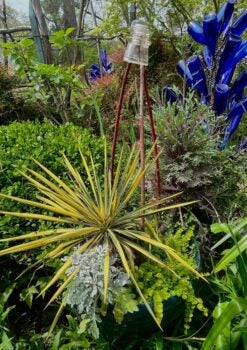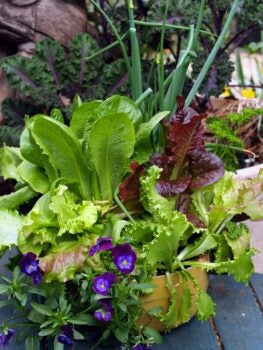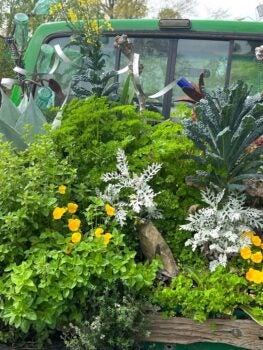Simple tips for flower arrangements makes everyone a professional
Published 8:37 am Friday, March 29, 2024
By Felder Rushing
Gardening Columnist
You don’t need special training in floral design to stick stuff in vases to beautify the home. But a handful of easy guidelines can help make your creations more interesting.
I’m sure Ralph Null, one of the South’s top floral designers, author, and my inspirational MSU professor, may be amused by this, but I simplified some of what he taught me to make it easier to remember; some actually applies to flowers and even veggies grown in containers, or landscape beds. Even my truck garden.
You may have heard the “thriller, filler, and spiller” recipe of putting something really showy in a vase or pot, then filling in with less showy stuff with complementary colors, and adding something to cascade over the side. I learned it, in floral design terms, as “line, mass, and filler” which usually needs some sort of explanation, but in my unvarnished over simplified way of thinking, I now routinely try to include something spikey, something roundy, and something frilly.
Other words, put any eye-catching, large, or otherwise showy flowers kinda down low in a vase or flower pot, then add taller, thinner materials to draw the eye down to the main show, then lightly fill in the gaps with smaller stuff.
No two gardeners will ever do this the same way, but for example I might put a large camellia flower in a vase, add taller, smaller daffodils, then fill in with a spray of red nandina berries. Or in a potful of herbs I will have some with roundish leaves plus something ferny and something taller and thinner. And something that hangs over the edge.
I do this in all my containers and beds, sometimes adding non-plant materials as accessories; easy add-ins include dried grasses or small interesting sticks (love my little crape myrtle and winged elm branches), maybe even spray painted to add color pizazz. Or accent with a little gnome, urn, birdbath, or hard object.
There is certainly nothing “wrong” with having a jumbled hodge-podge all shoved together, but it’s nice to mix stuff up, using different shapes, sizes, colors, and even textures so you create a little scene.
You do you. But next time think about spikey, roundy, frilly, and floppy.
Note: Sometimes there are very timely topics need addressing without too many words; for this reason, I am restarting my long-ago practice of including two or three at the end of weekly columns. If anyone has suggestions, feel free to email me at Rushingfelder@yahoo.com or go to my blog and scroll down to the “email me” link. Meanwhile, here goes:
Timely Tips:
Countless pines, magnolias, and other trees, devastated by last year’s drought, have browned out and even become infested with insect pests they normally resist. Bottom line, which even applies to dead pines with pine beetles: Unless a tree is obviously likely to do property damage if it falls in a certain direction, there is no horticultural need to remove it; as it slowly falls apart it will be host to countless different creatures that depend on dead “snags” for their life cycle. Consider saving the money and effort it takes to remove those that are not liabilities, and leave them standing. And yes, according to most nonprofit urban tree experts, this applies to dead pines.
It is generally too late to spray the lawn for spring weeds/wildflowers, but finally time to fertilize, now that it has started greening up and been mowed a time or two. To help grass leaves gather energy to jump-start new roots and shoots, raise your mower as high as you can stand it.
Felder Rushing is a Mississippi author, columnist, and host of the “Gestalt Gardener” on MPB Think Radio. Email gardening questions to rushingfelder@yahoo.com.





